Mexican Campaign at Vera Cruz
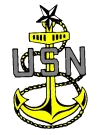 World
War I
World
War I 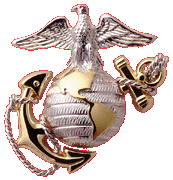
World War II
Korean War
Click to Play the
Marines' Hymn
 World
War I
World
War I 
Major John William Augustine, USMCR
Born July 26, 1894 Camden New Jersey died July 03, 1979
John's military records show he was born in 1891 because he lied about
his age in order to join the Navy. In truth he was born in 1894.
He joined the United States Navy at the age of 15.
Summary of Service
(Any information inside of parenthesis is added by Trish Carden)
| June 30, 1910 - August 15, 1910 | 4th Division Naval Battalion D.C. N. G. ( Naval Gun?)
USS Ozark, Washington D. C.  |
| August 16, 1910 - August 15, 1914
(Apr. 21, 1914 United States forces shell and then seized Vera Cruz in dispute with conservative dictator Huerta and brings US fleet into Tampico Bay.) (July 28, 1914 World War I begins as the Ottoman Empire declares war on Bosnia) (Aug. 4, 1914 President Wilson issues a proclamation of neutrality) (Aug. 15, 1914 The Panama Canal opens for business) Aug. 1914 United States evacuates troops stationed in Vera Cruz, Mexico) |
Trained St. Helena, Portsmouth, Virginia
USS Iowa, USS Indiana,
Camp Siberia, Philadelphia PA.
USS Utah, serving in Vera Cruz, Mexico |
| September 29, 1915 | Married Rosa Barkanda |
| July 04, 1916 | Rosaline Elizabeth "Libby" Augustine born to John & Rosa |
| (April 6, 1917 The United States declares war on Germany) January 10, 1918 - March 9, 1919 | USS Haterias, USS Mars, Hq. San Francisco California as Boatswain, W.W.I |
| September 06, 1917 | John Leo "Buddy" Augustine born to John & Rosa |
| From March 1919 through July 1931 | Civilian : Constuction worker, Gas Station owner |
| December 06, 1919 | Francis "Fran" Wales Augustine born to John & Rosa |
| March 13, 1921 | Theresa Myrle Augustine born to John & Rosa |
| July 25, 1931 - August 30, 1934 | Motor Transport Company (440) Sixth Marine Reserve Brigade, Washington
D.C. as CO
 |
| September 1, 1934 - November 14, 1934 | 3 Battalion Company D. 6th Reserve Brigade |
| November 15, 1934 - May 21, 1935 | Company E 8th Reserve Regiment |
| May 22, 1935 - December 31, 1939 | 5th Battalion Fleet Marine Corps Reserve |
| January 1, 1940 - July 7, 1940 | Company A General Service Unit |
| January 16, 1940- July 7, 1940 | Associated with 5th Battalion Washington Deputy Chief of Mission |
| July 8, 1940 | Transferred to the Honorary Retire List |
| (December 7, 1941 Pear Harbor Attacked by Japanese)
June 13, 1942 - July 1, 1942 |
Reported to the Commanding General M. B. Quantico, Virginia for Active Duty |
| July 2, 1942 - December 28, 1943 | Reported Chief of Bureau Ordnance Navy Department O in C. Landing Force Ammo. Section. |
| December 28, 1942 | Ordered to San Francisco California Depot of Supplies, San Francisco, California 1 |
| January 14, 1944 - March 13, 1944 | Assistant Officer in Charge AMMO. Supply Service, Pearl Harbor Territory of Hawaii |
| June 15, 1944 - December 4, 1945 | Ammunition Officer(s) Ordnance Division Supply Service Fleet Marine Force Pacific (Fleet) |
| December 6, 1945 | Left Pearl Harbor Territory of Hawaii on the USS Lst. # 791 |
| December 19, 1945 | Reported Headquarters Department of the Pacific San Francisco, California |
| December 24, 1945 | HOME |
| April 8, 1946 | Detached to inactive Duty and the Honorary Retired List |
| April 9, 1946 - August 11, 1949 | Honorary Retired List |
| August 12, 1949 | Resign from the Retired List and Reenlisted USMCR Washington DC |
| (June 25, 1950 North Korea invades South Korea )
July 24, 1950 |
Reported for active duty, CO. 5th Battalion Duty Camp LeJune South Carolina |
| August 11, 1950 - August 17, 1950 | 2nd Marine Division Fleet Marine Force 2nd Ordnance Battalion Company |
| August 18, 1950 - August 31, 1950 | 7th Marine (Reinf.) 3rd Battalion 11th Marine Service Battalion |
| September 1, 1950 - September 15, 1950 | 1st Marine Division Fleet Marine Force Rear Echelon |
| September 16, 1950 - June 24, 1951 | M. B. Camp J. H. Pendleton Marine Corps Supply Depot, Ammo. Dump |
| June 25, 1951 | Inactive Duty and Home |
| September 30, 1951 | Reverted to the Honorary Retired List |
| Infantry Basic A,
Infantry Basic Basic Jr. Reserve Course Senior Reserve Course Navy Toxic Gas Handlers |
November 23, 1933
April 11, 1934 February 7, 1936 June 6, 1937 July 6, 1938 October 30, 1943 |
| Navy Good Conduct, 1914
Mexican Campaign, Vera Cruz, 1914 World War 1, 1918 Fleet Marine Corps Reserve, 1940 American Defense, 1942 American Campaign, 1943 Asiatic Pacific Campaign, 1944 Letter of Commendation with Medal, 1945 President Citation Ribbon, 1944 World War 2, 1945 Pacific Occupation 1945 Reserve 10 Year, 1948 |
| Ship | Hull No. | Comm. | Decomm. | Disposition |
| Utah BB 31 | 1 | 20 Nov 1895
9 Jan 1906 |
29 Dec 1903
31 Jan 1919 |
Used as aerial bomb target;
hulk sold as scrap 19 Mar 1924 |
| Statistics:
Displacement: 21,825 tons Length: 521'6" Beam: 88'3" Draft: 28'4" Speed: 20.75 knots Complement: 1,041 Armament: Ten 12" guns; sixteen 5" guns; two 21" torpedo tubes Class: Florida |
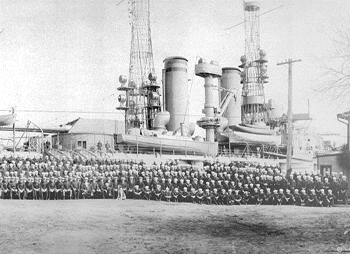 |
Click to see larger image of UTAH
Utah (Battleship No. 31) was laid down on 9 March 1909 at Camden, N.J., by the New York Shipbuilding Co.; launched on 23 December 1909; sponsored by Miss Mary Alice Spry, daughter of Governor William Spry of Utah; and commissioned at the Philadelphia Navy Yard on 31 August 1911, Capt. William S. Benson in command.
After her shakedown cruise, a voyage that took her to Hampton Roads, Va.; Santa Rosa Island and Pensacola, Fla.; Galveston, Tex.; Kingston and Portland Bight, Jamaica; and Guantanamo Bay, Cuba, Utah was assigned to the Atlantic Fleet in March 1912. She operated with the Fleet early that spring, conducting exercises in gunnery and torpedo defense, before she entered the New York Navy Yard on 18 April for an overhaul.
Departing New York on 1 June, Utah briefly visited Hampton Roads and then steamed to Annapolis, Md., where she arrived on the 5th. There, she embarked Naval Academy midshipmen and got underway on the 10th for the Virginia capes and the open Atlantic. She conducted a midshipmen training cruise off the New England seaboard well into the summer before disembarking her contingent of officers-to-be back at Annapolis on 24 and 25 August. Soon thereafter, the battleship headed for the Southern Drill Grounds to conduct gunnery exercises.
For a little over two years, the dreadnought maintained that schedule of operations off the eastern seaboard, ranging from the New England coast to Cuban waters. During that time, she made one cruise to European waters, visiting Villefranche, France, from 8 to 30 November 1913.
Utah began the year 1914 at the New York Navy
Yard and sailed south on 5 January. After stopping at Hampton Roads, she
reached Cuban waters later in the month for torpedo and small arms exercises.
However,
due to tension in Mexico, Utah sailed for Mexican waters in early February
and reached Vera Cruz on the 16th. She operated off that port until getting
underway for Tampico on 9 April with several hundred refugees embarked.
Soon thereafter, it was learned that a German steamship, SS Ypiranga, was
bound for Vera Cruz with a shipment of arms and munitions earmarked for
the dictator Victoriano Huerta. Utah received orders to search for the
ship and put to sea and reached Vera Cruz on the 16th. When it appeared
that the shipment might be landed, the Navy took steps to take the customs
house at Vera Cruz and stop the delivery. Accordingly, plans were drawn
up for a landing at Vera Cruz, to commence on 21 April 1914.
See Photo of landing. (The USS Utah's battalion being towed ashore
under small arms fire, early in the afternoon of 21 April 1914, during
the U.S. intervention at Vera Cruz.
The fort of San Juan de Ulua is in the background, with a possible
Mexican Government steamer moored nearby.)
Utah consequently landed her "battalion" — 17 officers and 367 sailors under the command of Lt. Guy W. S. Castle — as well as her Marine detachment, which formed part of the improvised "First Marine Brigade," made up of detachments of Marines from the other ships that had arrived to show American determination. In the ensuing fighting the men of Utah's bluejacket battalion distinguished themselves. Seven won Medals of Honor. Those seven included Lt. Castle, the battalion commander; company commanders Ens. Oscar C. Badger and Ens. Paul F. Foster; section leaders, Chief Turret Captains Niels Drustrup and Abraham Desomer; Chief Gunner George Bradley; and Boatswain's Mate Henry N. Nickerson.
See photo of the USS Utah battalion marching along the Vera Cruz waterfront while returning to their ship, circa April-June 1914.
MEXICAN CAMPAIGN (VERA CRUZ) RECIPIENTS OF MEDAL OF HONOR
Utah remained at Vera Cruz for almost two months before returning north to the New York Navy Yard in late June for an overhaul.
See Photo of Crewmen parading before the New York Public Library, circa June or July 1914, following their ship's return from Vera Cruz. Note Navy Battalion flags carried before the first rank.
Over the next three years, the battleship operated on a regular routine of battle practices and exercises from off the eastern seaboard into the Caribbean, as the United States readied its forces for the possible entry of the United States into the worldwide war that broke out in July 1914.
See Photo of USS Utha Firing her fifth salvo, 26 June 1920, during exercises with her main battery 12"/45 guns.
See Photo of Crew of a 5"/51 secondary
battery gun in action during early 1920s exercises.
Note gas masks in use, and breeches of two 3-pdr saluting guns at the
bottom of the picture.
After the United States finally declared war on 6 April 1917, Utah operated in the waters of the Chesapeake Bay as an engineering and gunnery training ship and continued that duty until 30 August 1918, when she sailed for the British Isles with Vice Admiral Henry T. Mayo, Commander in Chief, United States Atlantic Fleet, embarked.
Fears of possible attacks by German heavy units upon the large convoys
crossing the Atlantic with troops and munitions for the western front prompted
the dispatch, to European waters, of a powerful force of American dreadnoughts
to Irish waters: Utah — as part of that movement — reached Brerehaven,
Bantry Bay, Ireland, on 10 September 1917. There, she became the flagship
of Rear Admiral Thomas S. Rodgers, Commander, Battleship Division 6. Until
the signing of the armistice on 11 November 1918, Utah, along with the
sister ships USS Oklahoma (Battleship No. 37) and USS Nevada (Battleship
No. 36), operated from Bantry Bay, covering the Allied convoys approaching
the British Isles, ready to deal with any surface threat that the German
Navy could hurl at the valuable transports and supply ships.
Operated out of San Francisco, California delivering coal and stores to the fleet.
Built by Maryland Steel built 1909-04-10 and sold (Mercantile). In 1923 the USS Mars was sunk 1924-11-08.
On 15 January 1918, in company with Stewart, Hopkins and Worden (No. 16), Paul Jones sailed for the Azores by way of Bermuda. After departing Bermuda, she had to request permission to turn back due to a serious leak in her port after bunker. From 23-26 January Paul Jones' crew struggled magnificently against great odds and succeeded in saving the ship from sinking. Wallowing in stormy seas with her after fire room flooded, barely able to maintain headway, losing all drinking and feed water and steaming under two boilers with salt feed, manning bucket brigades for lack of operable pumps, and receiving no answers to her distress signals, she finally sighted a light off David's Head, Bermuda, signaled the fort for assistance and dropped her anchor.
Paul Jones had an exhausted but very happy crew. She remained at Bermuda
until 22 February for repairs and then sailed for Philadelphia escorted
by Mars (AC-6) arriving 25 February. Following permanent repair
at the Philadelphia Navy Yard, Paul Jones reported to Fortress Monroe,
Va. 18 April, and performed various duties in and around Chesapeake Bay
until 6 August.
|
From January 10, 1918 to March 9, 1919
|
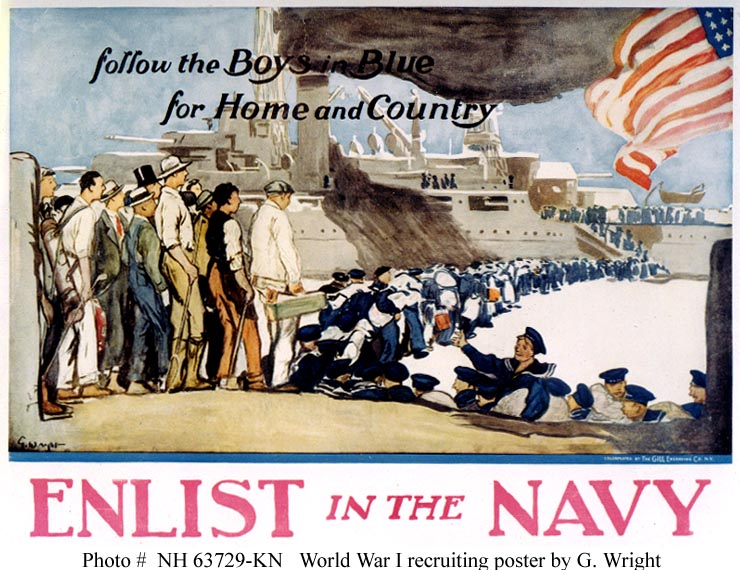 |
A BRIEF CHRONOLOGY OF MAJOR EVENTS IN THE GREAT WAR
The second USS Ozark was originally built as the USS Arkansas, a monitor
of 3,225 tons. She was placed in commission 28 October 1902, and finally
sold at Philadelphia on 23 January 1922.
| Displacement
(tons) 3,255 Built / Launched 11/10/1900 Length 252' 0" Built By Newport News Shipbuilding & Drydock Co. Beam 50' 0" Class Arkansas
|
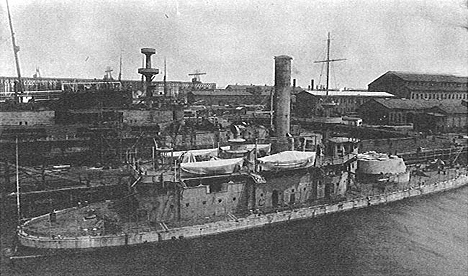 |
The Arkansas class was the last group of monitors to be constructed for the U.S. Navy although the navies of Great Britain and Italy built and used monitors for shore bombardment during World War I and the former used them during World War II as well. Single turreted monitors, they mounted the most modern heavy guns in the U.S. Navy at the time they were built 12 inch 4- calibre weapons. The Arkansas class did not see any combat during World War I and instead served as submarine tenders. Alexander C. Brown, writing in the Society of Naval Architects and marine Engineers Historical Transactions noted in a penetrating comment that: Monitors found their final employment as submarine tenders in World War I for which their low freeboard hulls made them well suited. It is significant to note, however, that in this humble capacity they were ministering to the needs of that type of craft which had logically replaced them for initially envisaged monitors were designed to combine heavy striking power with concealment and the presentation of a negligible target area...
The second Ozark, a single-turreted "New Navy" monitor and one of the last monitors built for the U.S. Navy, was laid down 14 November 1899 by the Newport News Shipbuilding and Drydock Co.; launched 10 November 1900; commissioned as Arkansas 28 October 1902, Comdr. C. E. Vreeland in command.
After shakedown, Arkansas' first duty was with the U.S. Naval Academy as an instruction and cruise ship for midshipmen. She was then assigned to the Coast Squadron North Atlantic Fleet, and cruised off the east coast, in the Gulf of Mexico, and in the West Indies. She continued to make summer practice cruises with midshipmen, however, and in 1906 was again assigned to the Naval Academy for instructional purposes.
Renamed Ozark, 2 March 1909, she was assigned to the District of Columbia Naval Militia from 26 June 1910 to 6 March 1913. Later that month she began refitting in Norfolk as a submarine tender and began duties as a tender 12 July {1913}. After special duty in Mexican waters during most of 1914, she participated in Atlantic Fleet maneuvers in 1915 and operated in the Chesapeake Bay area in 1916.
Not mentioned in the Ozarks entry in DANFS - but recorded as part of several boat's logs:
"In 1913, the five C Boats (Octopus, Stingray, Tarpon, Bonita, and Snapper),
under the command of a Lieutenant (junior grade), successfully completed
the longest cruise made up to that time by United States submarines operating
under their own power. Accompanied by several surface ships, including
Ozark which was acting as tender, the C boats completed a 700 mile passage
between Guantanamo Bay, Cuba and Cristobal, Panama Canal Zone, without
serious engineering mishap."
Ozark was ordered to SubDiv 6, Atlantic Fleet, 6 April 1917 and soon
proceeded to Tampico, Mexico where she cruised off the coast protecting
American and Allied interest. She sailed for New Orleans 18 December 1918
after which she cruised off Key West, Central America and the Panama Canal
Zone. She returned to Hampton Roads 23 June 1919 and decommissioned in
Philadelphia 20 August. Ozark was sold 26 January 1922.
| Ship | Hull No. | Comm. | Decomm. | Disposition |
| Indiana BB 1 | 1 | 20 Nov 1895
9 Jan 1906 |
29 Dec 1903
31 Jan 1919 |
Used as aerial bomb target;
hulk sold as scrap 19 Mar 1924 |
| Statistics:
Displacement: 10,288 tons Length: 350'11" Beam: 69'3" Draft: 24' Speed: 15 knots Complement: 473 Armament: Four 13" guns; eight 8" guns; four 6" guns; twenty 6-pounders; six 1-pounders |
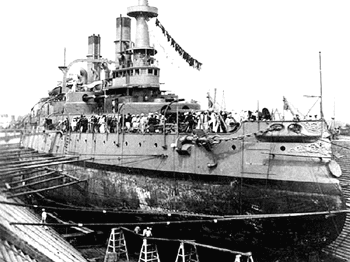 |
The first Indiana (BB-1) was laid down 7 May 1891 by William Cramp & Sons, Philadelphia; launched 28 February 1893; sponsored by Miss Jessie Miller, daughter of the Attorney General of the United States; and commissioned 20 November 1895, Captain Robley D. Evans in command.
Following fitting out at Philadelphia Navy Yard, Indiana trained off the coast of New England. This duty continued until the outbreak of the Spanish-American War in 1898, when Indiana formed part of Admiral Sampson's squadron. The 10 ships sailed south to intercept Cervera's Spanish squadron, known to be en route to the Caribbean. Indiana took part in bombardment of San Juan 12 May 1898, and returned to Key West with the squadron to guard Havana 15 May. After it was discovered that Cervera was at Santiago, Sampson joined Schley there 1 June and took up the blockade.
In late June, Army units arrived and were landed for an assault on Santiago. Cervera saw that his situation was desperate and began his gallant dash out of Santiago 3 July 1898, hoping to outrun the American blockaders. Indiana did not join in the initial chase because of her extreme eastern position on the blockade, but was near the harbor entrance when the Spanish destroyers Pluton and Furor emerged. In a short time both ships were destroyed by Indiana's guns and those of the other ships. Meanwhile the remaining Spanish vessels were sunk or run ashore, in one of the two major naval engagements of the war.
Indiana returned to her previous pattern of training exercises and fleet maneuvers after the war, and made practice cruises for midshipmen of the Naval Academy before decommissioning 29 December 1903.
The battleship recommissioned at New York Navy Yard 9 January 1906. During this phase of her career, Indiana served with the Naval Academy Practice Squadron, sailing to Northern Europe and the Mediterranean. At Queenstown, Ireland, she fired a 21-gun salute 22 June 1911 in honor of the coronation of King George V. This important work in training the Navy's future leaders ended in 1914 and she decommissioned at Philadelphia 23 May 1914.
Indiana recommissioned a second time 24 May 1917, and served through World I as a training ship for gun crews off Tomkinsville, N.Y., and in the York River, Va. She decommissioned at Philadelphia 31 January 1919.
The name Indiana was canceled 29 March 1919 and she was reclassified
Coast Battleship Number 1 so that the name could be assigned to a newly
authorized battleship. She was used as a target in an important series
of tests designed to determine the effectiveness of aerial bombs and was
sunk in November 1920. Her hulk was sold for scrap 19 March 1924.
| Statistics:
Displacement: 11,346 tons Length: 360' Beam: 72'2" Draft: 24' Speed: 17 knots Complement: 727 Armament: Four 12" guns; eight 8" guns; six 4" guns; twenty 6-pounders; four 1-pounders; twenty-four 14" torpedo tubes |
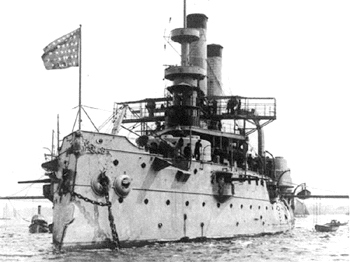 |
The second Iowa (BB-4) was laid down by William Cramp & Sons, Philadelphia, 5 August 1893; launched 28 March 1896; sponsored by Miss M. L. Drake, daughter of the governor of Iowa; and commissioned 16 June 1897, Captain W. T. Sampson in command.
After shakedown off the Atlantic Coast, Iowa was assigned to the Atlantic Fleet and was ordered to blockade duty, 28 May 1898, off Santiago de Cuba. On 3 July 1898, she was the first to sight the Spanish ships approaching and fired the first shot in the Battle of Santiago de Cuba. In a 20-minute battle with Spanish cruisers Maria Teresa (flagship) and Oquendo, her effective fire set both ships aflame and drove them on the beach. Iowa, continuing the battle in company with converted yacht Gloucester sank the Spanish destroyer Pluton and so damaged destroyer Furor that she ran upon the rocks. Iowa then turned her attention to the Spanish cruiser Viscaya which she pursued until Viscaya ran aground. Upon the conclusion of the battle, Iowa received on board Spanish Admiral Cervera and the officers and crews of the Viscaya, Furor and Pluton.
After the Battle of Santiago, Iowa left Cuban waters for New York, arriving 20 August 1898. On 12 October 1898, she departed for duty in the Pacific, sailed around Cape Horn, and arrived San Francisco 7 February 1899. The battleship then steamed to Bremerton, Wash., where she entered drydock 11 June 1899. After refit, Iowa served in the Pacific Squadron for 2 1/2 years, conducting training cruises, drills, and target practice. Iowa left the Pacific early in February 1902 to become flagship of the South Atlantic Squadron. She sailed for New York 12 February 1903 where she decommissioned 30 June 1903.
Iowa recommissioned 23 December 1903 and joined the North Atlantic Squadron. She participated in the John Paul Jones Commemoration ceremonies, 30 June 1905. Iowa remained in the North Atlantic until she was placed in reserve 6 July 1907. She decommissioned at Philadelphia 23 July 1908.
Iowa recommissioned 2 May 1910 and served as an at sea training ship and as a component of the Atlantic Reserve Fleet. During the next four years she made a number of training cruises to Northern Europe and participated in the Naval Review at Philadelphia, 10 to 15 October 1912. She decommissioned at Philadelphia Navy Yard 27 May 1914.
At the outbreak of the first World War, Iowa was placed in limited commission 23 April 1917. After serving as Receiving Ship at Philadelphia for 6 months, she was sent to Hampton Roads, Va., and remained there for the duration of the war, training men for other ships of the fleet, and doing guard duty at the entrance to Chesapeake Bay. She decommissioned for the final time 31 March 1919.
On 30 April 1919, Iowa was renamed Coast Battleship No. 4, and was the first radio controlled target ship to be used in a fleet exercise. She was sunk 23 March 1923 in Panama Bay by a salvo of 14-inch shells.
This year marks the 84th year of the official existence of the United States Marine Corps Reserve. The true origins of the reserve, however, extend back to the Colonial period in American history. Throughout most of the 18th and 19th centuries, virtually all American men of military age served in their local or state militias. Several states along the East Coast and on the Great Lakes had naval militias that included detachments of Marines. By 1915, the rapid growth of the navy and the war in Europe finally prompted legislation officially creating a Naval reserve. Then on August 29, 1916 Congress passed statutory authority for the creation of the Marine Corps Reserve.
The first test for the newly created Marine Corps Reserve came when the United States entered World War I. Already America's "force in readiness," Marine Corps combat units, with many reservists in their ranks, were among the first to be sent to the battlefields of France. The integration of reservists into the regular Marine Corps was so seamless that combat records do not even indicate which Marines were regular and which were reservists. In all, nearly 7,000 enlisted and more than 400 officer reservists served in combat. The ranks of the wartime Marine Corps reserve also included women for the first time. The majority of the wartime Marine Corps were not career Marines but had enlisted "for the duration." These Marines were essentially reservists.
With demobilization after World War I, the Marine Corps and its reserve had to fight to justify their continued existence. With almost no money, the Marine Corps reserve was active during the 1920s and 30s making its training more frequent and realistic. Even during this time of economic depression, most Marine reservists drilled without pay. The reserve did become more structured and more closely tied with their active duty counterparts. Reserve officer training programs like Reserve Officers Training Corps and Platoon Leaders Class were created to allow civilian college students to qualify for a Marine Corps commission. Reserve pilots also attended the Marine Corps Air Cadet Program.
When World War II began in Europe, the total active duty strength of the Marine Corps was fewer than 20,000. By the time Japanese planes bombed Pearl Harbor, there were over 66,000 Marines on active duty. At the height of the war, the Marine Corps numbered more than half a million. This phenomenal growth was almost entirely achieved through the reserve. Approximately 70 percent of all Marines and 90 percent of the Marine aviators who served during World War II were reservists.
The Marine Corps reserve made tremendous contributions to the total war effort in the Pacific. Reservists took part in virtually every Marine Corps operation of the war and many combat units were comprised almost entirely of reservists. Of the six flag raisers in the famous Iwo Jima picture, three were Marine Reservists. Of the 79 Marines who earned the Medal of Honor during the war, 44 were reservists. Of the 11 Marine Corps aviators who won their country's highest award, six were in the reserve.
Disclaimer: The purpose of this Web Page is to share information for the purpose of research. I have not proved documentation of all genealogy material, nor have I kept source notes as I should. But I had lots of fun and met some great people along the way..
If you find any mistakes please contact the Web Page creator, Trisha
Carden ![]() , and I
shall try to correct them.
, and I
shall try to correct them.
Site copyright 1999, 2000, 2001 Trish S. Carden (Please feel free to use this information but if you do please put a link back to this page)